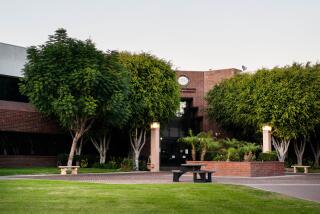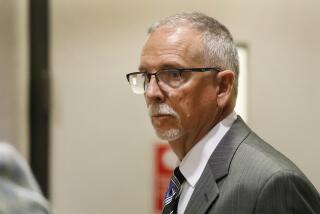Becoming a Doctor in the 19th Century
- Share via
USC’s School of Medicine celebrates its 100th anniversary this year. Among the many bits of historical trivia being remembered--this one noted in the Los Angeles County Medical Women’s Assn. Newsletter--is the fact that there were two women in the school’s first class of 20, a respectable statistic for women in 1885.
In addition, the fledgling school had a woman on its faculty of 12, the first woman medical school faculty member in California. Dr. Elizabeth Follansbee’s start in California had not been so auspicious. She was one of two women students in the University of California’s medical school in 1875, where the going was tough for women. The dean of the school was opposed to women in medicine and “aided the male students in hazing the women,” according to the newsletter article about Follansbee’s life by Dr. Selma Harrison Calmes, the editor of the publication.
After a year, Follansbee went off to the University of Michigan Medical School, which accepted many women. She finished school at the Woman’s Medical College of Philadelphia, the second of 17 medical colleges for women that were established in the 19th Century.
Founded a Hospital
She then returned to California where, with two other women physicians, she founded Children’s Hospital of San Francisco, one of nine hospitals founded by women at that time and the only one on the West Coast. She moved to Los Angeles for health reasons where she became the first female member of the Los Angeles County Medical Assn. and was appointed to teach pediatrics at USC’s tiny new school, housed in an old winery on Aliso Street.
Calmes attributes some of Follansbee’s success in cracking the male medical Establishment to the fact that her family was socially prominent and that she confined her practice to areas considered suitable for women--treating women and children.
Among the ways she paved the way for the future of women in medicine was to arrange for USC women graduates to intern at Children’s Hospital in San Francisco, the only hospital on the West Coast that accepted women interns and residents.
‘Noted for Her Liberality’
She died in 1917 in poverty in the county hospital. Her obituary said that she was “noted for her liberality and friendship to any woman in distress” and that she had given away almost all of her large income to charity.
Some of the legacy of women like Follansbee may be seen in a congratulatory item also printed in the newsletter for women physicians: Virginia Weldon, deputy vice chancellor of Washington University’s School of Medicine, has been named chairman-elect of the Assn. of American Medical Colleges--the first woman chosen to head the 108-year-old organization.
While women clergy are a rarity in many denominations, the United Methodists are in their 10th year of awarding scholarships to hundreds of women who have attended seminaries to become ordained ministers.
This year 54 Georgia Harkness Scholarships, named for the late Methodist theologian, have been awarded to women at seminaries around the country.
An unusual aspect is that most of the scholarships, in amounts from $500 to $1,250, go to women who are studying for the ministry as a second career. Almost all of the recipients are over 35, said Garlinda Burton of the church’s news service in Nashville. These women bring with them a background of local church experience that has helped to dispel “any lingering myths about resistance to clergywomen,” said the Rev. Kathy Nickerson of the United Methodist Division of Ordained Ministry.
More to Read
Sign up for Essential California
The most important California stories and recommendations in your inbox every morning.
You may occasionally receive promotional content from the Los Angeles Times.













